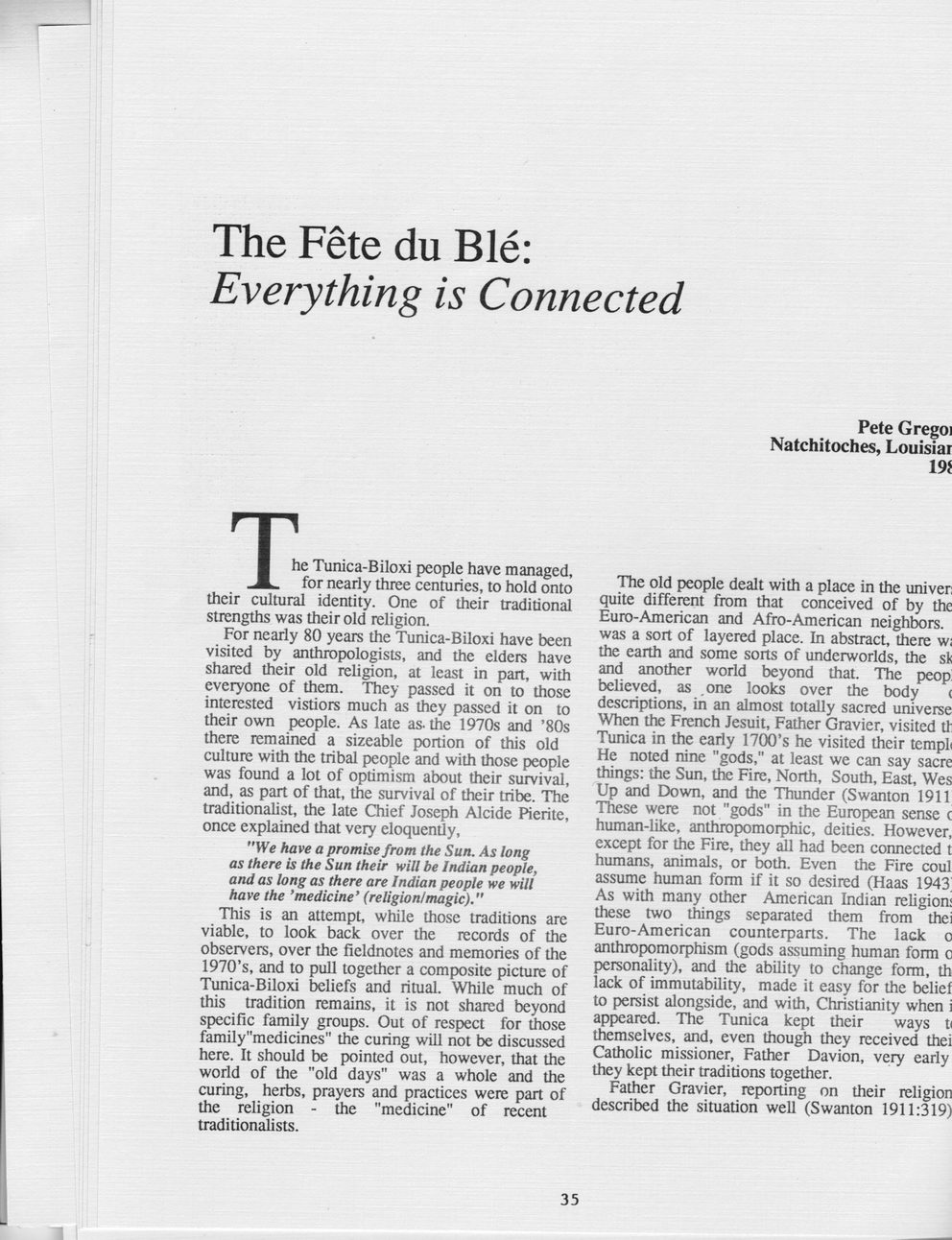This text was obtained via automated optical character recognition.
It has not been edited and may therefore contain several errors.
The Fete du Ble: Everything is Connected Pete Gregoi Natchitoches, Louisiai 19* T ■ he Tunica-Biloxi people have managed, JL for nearly three centuries, to hold onto their cultural identity. One of their traditional strengths was their old religion. For nearly 80 years the Tunica-Biloxi have been visited by anthropologists, and the elders have shared their old religion, at least in part, with everyone of them. They passed it on to those interested vistiors much as they passed it on to their own people. As late as- the 1970s and ’80s there remained a sizeable portion of this old culture with the tribal people and with those people was found a lot of optimism about their survival, and, as part of that, the survival of their tribe. The traditionalist, the late Chief Joseph Alcide Pierite, once explained that very eloquently, "We have a promise from the Sun. As long as there is the Sun their will be Indian people, and as long as there are Indian people we will have the ’medicine’ (religion/magic)." This is an attempt, while those traditions are viable, to look back over the records of the observers, over the fieldnotes and memories of the 1970’s, and to pull together a composite picture of Tunica-Biloxi beliefs and ritual. While much of this tradition remains, it is not shared beyond specific family groups. Out of respect for those family"medicines" the curing will not be discussed here. It should be pointed out, however, that the world of the "old days" was a whole and the curing, herbs, prayers and practices were part of the religion - the "medicine" of recent traditionalists. The old people dealt with a place in the univer: quite different from that conceived of by the Euro-American and Afro-American neighbors, was a sort of layered place. In abstract, there w; the earth and some sorts of underworlds, the sk and another world beyond that. The peop believed, as one looks over the body < descriptions, in an almost totally sacred universe When the French Jesuit, Father Gravier, visited tt Tunica in the early 1700’s he visited their templi He noted nine "gods," at least we can say sacre things: the Sun, the Fire, North, South, East, Wes Up and Down, and the Thunder (Swanton 1911 These were not "gods" in the European sense c human-like, anthropomorphic, deities. However, except for the Fire, they all had been connected t humans, animals, or both. Even the Fire coul assume human form if it so desired (Haas 1943; As with many other American Indian religion: these two things separated them from thei Euro-American counterparts. The lack o anthropomorphism (gods assuming human form o personality), and the ability to change form, th lack of immutability, made it easy for the belief to persist alongside, and with, Christianity when i appeared. The Tunica kept their ways t< themselves, and, even though they received thei Catholic missioner, Father Davion, very early they kept their traditions together. Father Gravier, reporting on their religion described the situation well (Swanton 1911:319) 35

Native Americans The-Tunica-Biloxi-Tribe-its-Culture-and-People-(44)